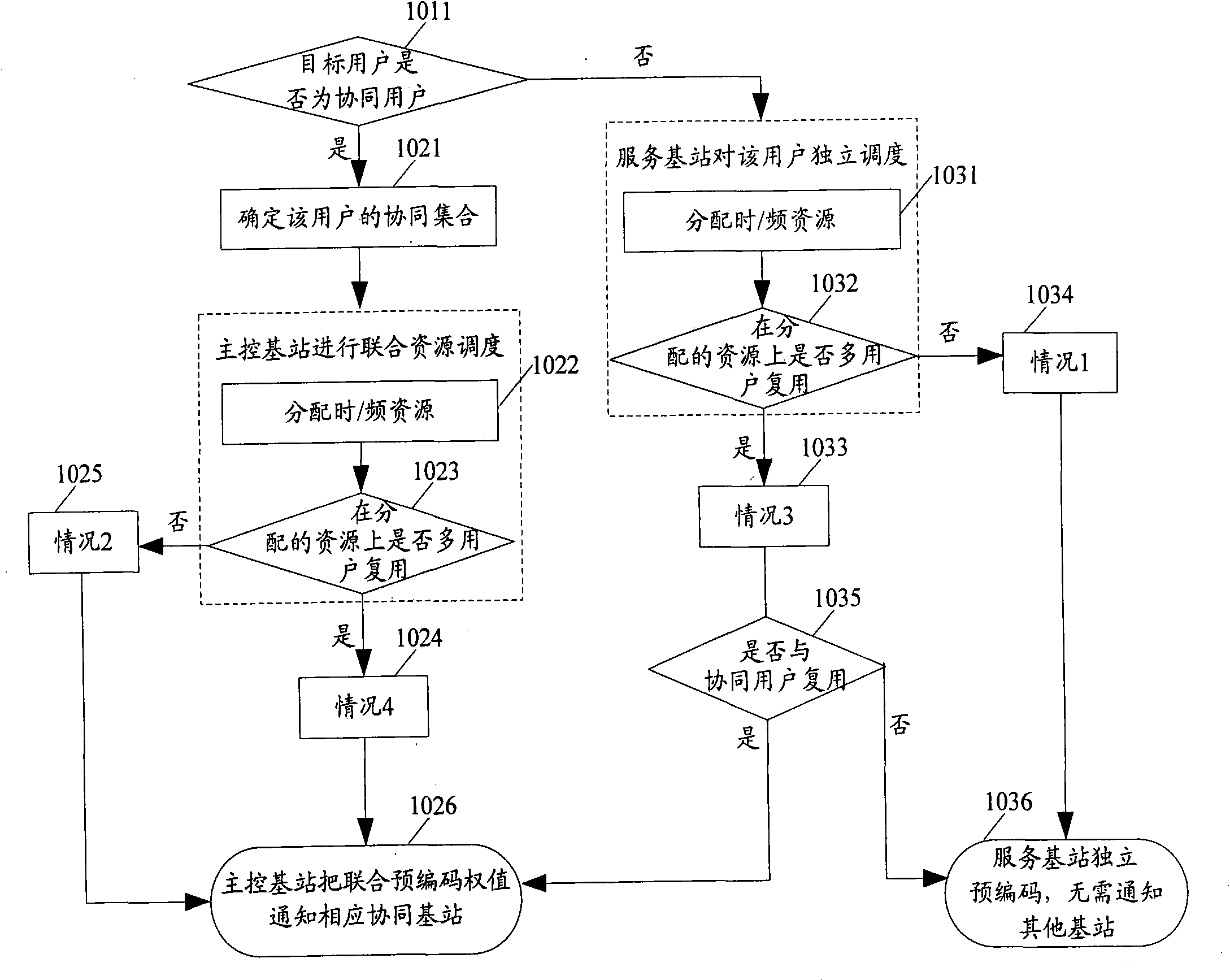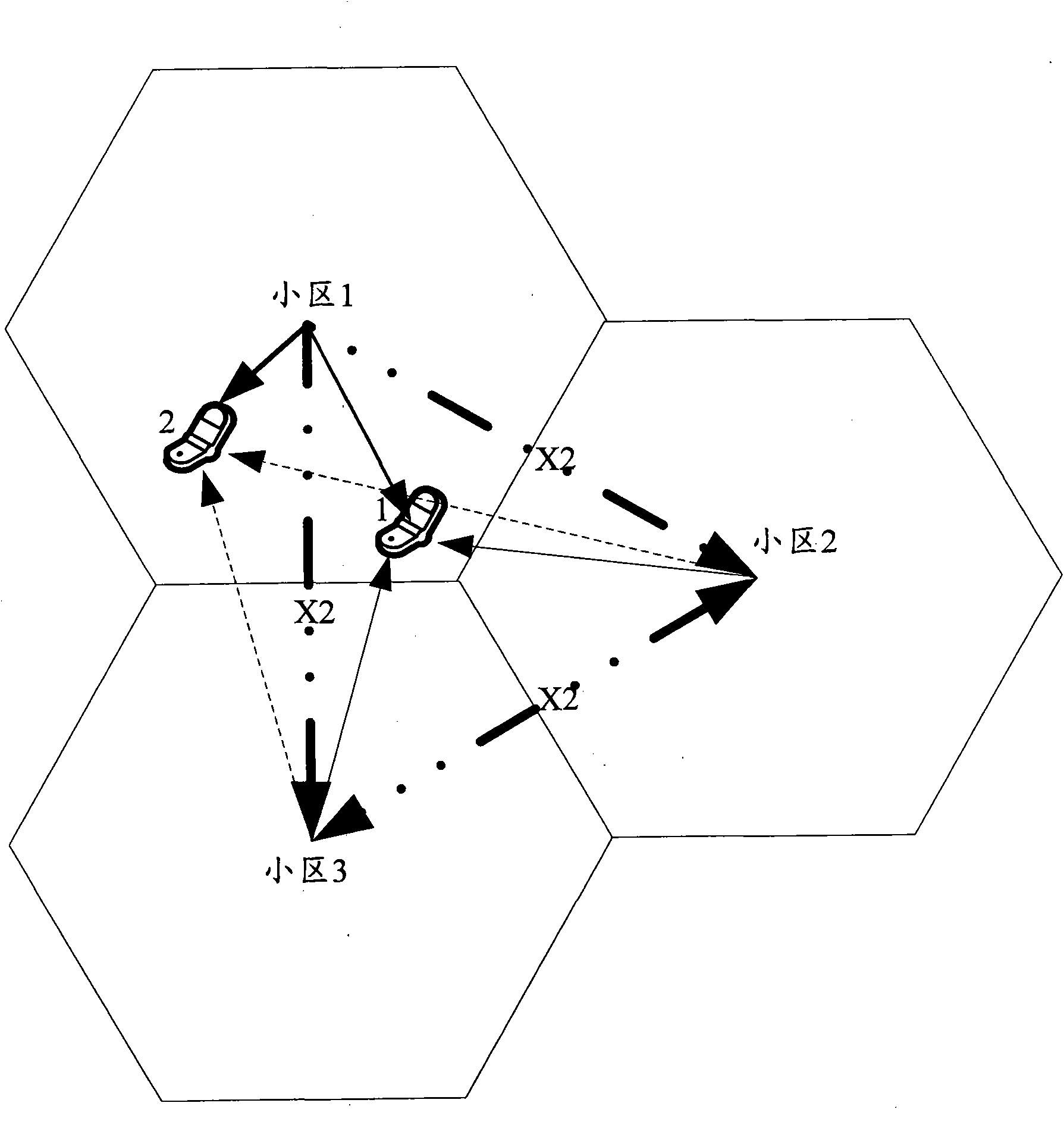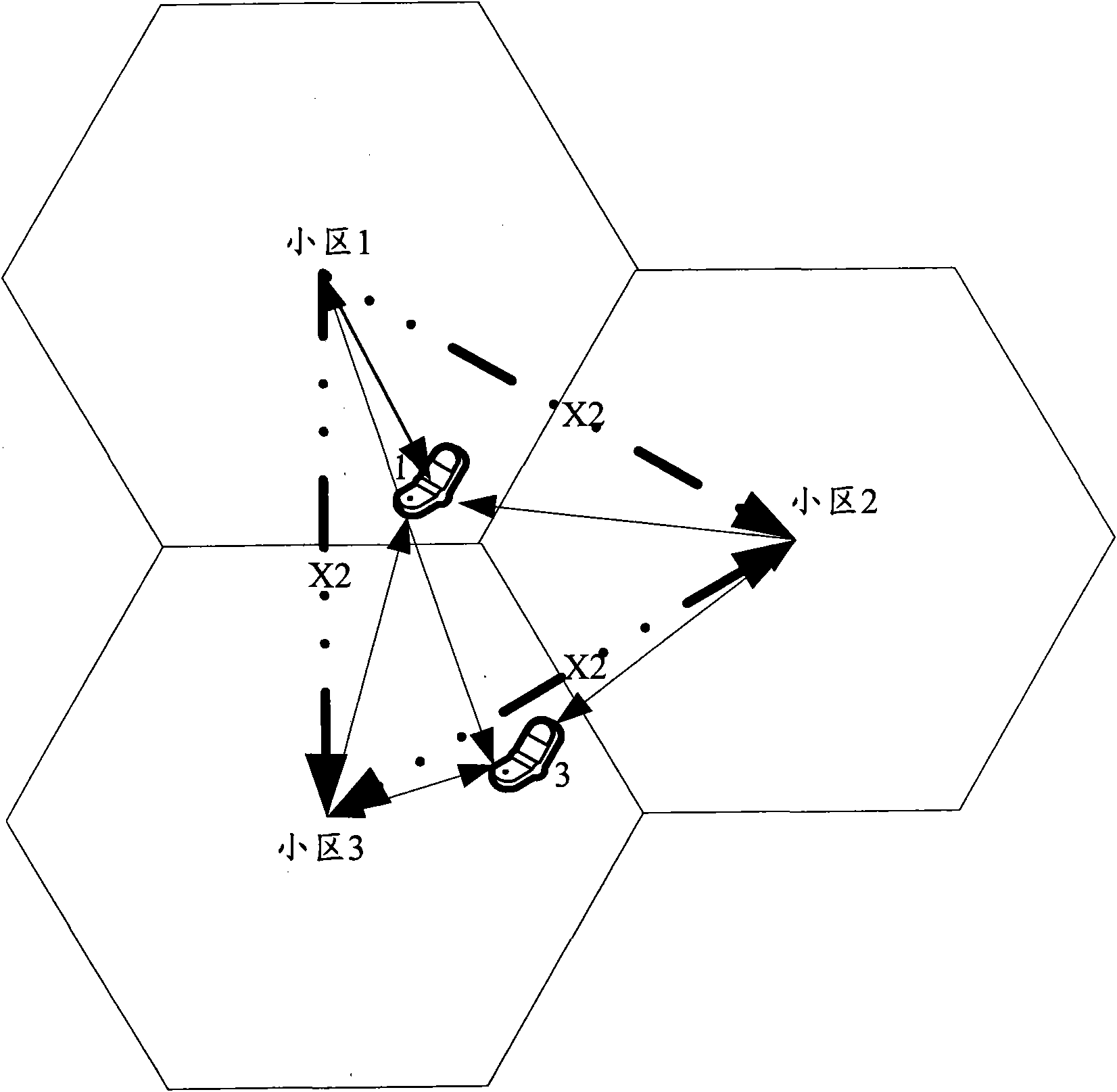Method and system for implementing multiple user complexing pre-coding in multi-point coordination transmission
A multi-point coordination and precoding technology, applied in the field of multi-user multiplexing precoding, can solve problems that have not yet existed, and achieve the effect of improving the signal-to-interference-noise ratio
- Summary
- Abstract
- Description
- Claims
- Application Information
AI Technical Summary
Problems solved by technology
Method used
Image
Examples
example 1
[0116] Example 1: A scenario where a cooperative user performs multi-user pairing with a non-cooperative user.
[0117] Combined with the semi-static planning of the system and the channel measurement feedback of user 1 and user 2, the serving cell (cell 1) to which user 1 and user 2 belong determines that user 1 is a cooperative user, and a cooperative set consisting of cell 1, cell 2, and cell 3 is required Coordinated transmission is performed for user 1, and base station 1 is the master base station of the coordinated set. User 2 is a non-cooperative user, and only the serving cell (cell 1) provides transmission. The base stations 1, 2, and 3 in the cooperative set interact with each other through the X2 interface to communicate channel information fed back by their respective service users. Finally, the master base station 1 determines the time-frequency resource block a between user 1 and user 2 according to the principle of orthogonality of paired user channels for mul...
example 2
[0129] Example 2: A scenario where two cooperative users perform pairing.
[0130] Combined with the semi-static planning of the system and the channel measurement feedback of user 1 and user 3, the serving cell (cell 1) to which user 1 belongs determines that user 1 is a cooperative user, and a cooperative set consisting of cell 1, cell 2, and cell 3 needs to perform For coordinated transmission, the serving cell (cell 3) to which user 3 belongs determines that user 3 is a coordinated user, and a coordinated set consisting of cells 1, 2, and 3 is required to perform coordinated transmission for user 3. Therefore, although user 1 and user 3 belong to different serving cells, they belong to the same coordination set.
[0131] Cells 1, 2, and 3 in the coordination set exchange channel information fed back by their service users with each other through the X2 interface, and perform overall resource scheduling. According to the principle of channel orthogonality of paired users, ...
example 3
[0143] Example 3: A scenario where two non-cooperative users perform pairing.
[0144] Combined with the semi-static planning of the system and the channel measurement feedback of users 4 and 5, the serving cell (cell 1) to which they belong determines that user 1 and user 5 are non-cooperative users, so only the serving cell transmits them. Cell 1 does not need to transmit the channel feedback of users 4 and 5 to cells 2 and 3 through the X2 interface, and cell 1 performs resource scheduling for these two users. According to the principle of channel orthogonality of paired users, it is determined that user 4 and user 5 perform multi-user pairing on the time-frequency resource block c. The network structure is as Figure 4 shown.
[0145] If the user directly feeds back the channel response to the serving cell, the channel response from user 4 to cell 1 is The channel responses from user 5 to cell 1 are respectively Cell 1 determines the transmit precoding weights of use...
PUM
 Login to View More
Login to View More Abstract
Description
Claims
Application Information
 Login to View More
Login to View More - R&D
- Intellectual Property
- Life Sciences
- Materials
- Tech Scout
- Unparalleled Data Quality
- Higher Quality Content
- 60% Fewer Hallucinations
Browse by: Latest US Patents, China's latest patents, Technical Efficacy Thesaurus, Application Domain, Technology Topic, Popular Technical Reports.
© 2025 PatSnap. All rights reserved.Legal|Privacy policy|Modern Slavery Act Transparency Statement|Sitemap|About US| Contact US: help@patsnap.com



